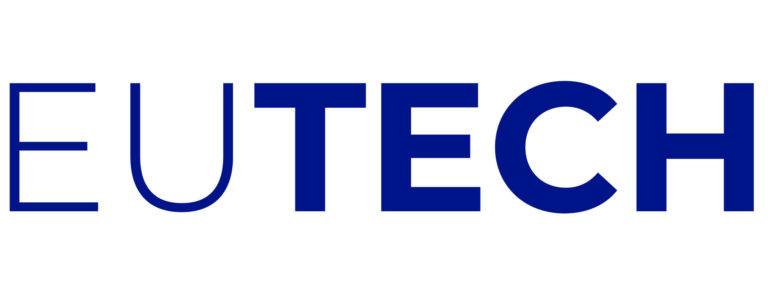1. Economic Situation in Taiwan
At the end of World War II, Taiwan ranked among the poorest countries of the world. In spite of its limited natural resources, it has succeeded in building a dynamic and open free market economy that is driven by industrial manufacturing and reached a gross domestic product per capita. In a relatively short period, Taiwan achieved impressive industrialization and high economic growth. The role of the state in the economy, the rapid industrialization and the importance of education are among the key factors that enabled Taiwan’s sustainable economic development.
1.1 One of the Four Asian Tigers
Taiwan is one of the four Asian Dragons with Hong-Kong, Singapore and South Korea, which underwent rapid industrialization and maintained exceptionally high growth rates (above 7 percent a year) between the early 1960s and 1990s. By the early 21st century, all four had developed into high-income economies (developed countries), specializing in areas of competitive advantage. Hong Kong and Singapore have become world-leading international financial centers, whereas South Korea and Taiwan are world leaders in manufacturing electronic components and devices. Not disposing of natural resources, Taiwan went famous for its spectacular economic growth based on the only resource available: the human resource. Making education, training and health its priorities, Taiwan offered its newly born industry a highly qualified working force. In some decades, Taiwanese industry raised from cheap consumer goods exportation to a competitive, sophisticated, cutting-edge industry. The business and investment climate are safe and serene, legal rules respect the international standards (in particular the protection of intellectual property), the investments are secure, and the justice is independent. The growth of the Four Asian Tiger economies has been attributed to export-oriented policies and strong development policies. A World Bank report also suggests two development policies among others as sources for the Asian miracle: factor accumulation and macroeconomic management.

fig 1. Growth in per capita GDP in the tiger economies between 1960 and 2014.
Taiwan and South-Korea began to industrialize in the mid-1960s with heavy government involvement, including initiatives and policies. Both countries pursued export-oriented industrialization as in Hong-Kong and Singapore. The four inspired by Japan’s evident success, they collectively pursue the same goal by investing in the same categories: infrastructure and education. They also benefited from foreign trade advantages that set them apart from other countries, most significant economic support from the USA. By the end of the 1960s, levels in physical and human capital in the four economies far exceeded other countries at similar levels of development. While high investments were essential to their economic growth, the role of human capital was also important. Education, in particular, is cited as playing a major role in the Asian economic miracle. The levels of education enrollment in the Four Asian Tigers were higher that predicted given their level of income. The creation of stable macroeconomic environments was the foundation upon which the Asian miracle was built. Each of the Four Asian Tiger states managed, to various degrees of success, three variables in: budget deficits, external debt and exchange rates. External debt was non-existent for Hong-Kong, Singapore and Taiwan. Export policies have been the de facto reason for the rise of these Four Asian Tiger economies. The approach is taken as been different among the four nations. Taiwan adopted a mixed economy system that accommodated with its export industry. Taiwan introduced export incentives for the traded-goods sector and also worked to promote specific exporting industries. All these policies helped to achieve a growth averaging 7,5% each year for three decades and achieved “a developed country” status. A first setback has been experienced in the 1997 Asian financial crisis whom Singapore and Taiwan were less impacted than the others, but the Four Asian Tigers recovered faster due to various economic advantages including high saving rates (except South Korea) and their openness to trade. The export-oriented tiger economies, which benefited from American consumption, were hit hard by the financial crises of 2007–08. In 2008 retail sales fell 11% in Taiwan. As the world recovers, the Four Asian Tiger economies have also rebounded strongly, due to fiscal stimulus measures for more than 4% of each country’s GDP in 2009 and the modest corporate and household debt.
These four countries invested heavily in their infrastructure as well as in developing the intellectual abilities of their human talent, fostering and retaining their educated population to help further develop and improve their respective countries. This policy turned out to be so effective that by the late 20th century, all four countries had developed into advanced and high-income industrialized developed countries, developing many different areas of advanced technology that give them a tremendous competitive advantage in the world. Additionally, these four countries are home to some of the most prestigious top-ranking universities in the world, such as National Taiwan University in Taipei. Inspired by Japan’s technological and economic success, Taiwan pursues a similar path of cutting-edge science and technology development and has actually the best and most technologically advanced top-ranked medical care system in the world. Since the 1950’s the Taiwanese developmental state has intervened and guided the economic development process, that gradually transformed its agricultural economy in a highly competitive industrial economy, where the GDP per capita grew exponentially from US$ 172 to 24,408 in the period 1962–2017. As a case of a very successful economy, Taiwan provides an interesting and useful “state and market” approach instead of a “state versus market” dichotomized approach. The developmental state has played a crucial role in ensuring a favorable business environment for entrepreneurs and companies. The well-educated and hard-working labor force contributed decisively to the export-led economic growth. The higher education system in Taiwan led the transition from elite-oriented system to a mass-oriented one. Engineering and natural sciences majors played one of the most prominent roles in Taiwan’s economic development. Finally, Taiwan’s political democratic system encouraged the emergence and development of a free-market economy. The advantageous country’s location in East Asia facilitated the participation and integration of Taiwan in international trade. Its strategic geographical position constitutes a favorable and strong factor for trade increase.

fig 2. Central position of Taiwan In Asia has been an advantage for business trade
PART 2: TAIPEI CITY
2.1 Urban Development
Actively promoting plans to make the best use of resources, strategies and policies around ecologically sustainable development, businesses in both new and the old city, and residential justice, the government responds to citizen’s needs by creating channels of communication with the community and outlines its vision “Toward a more liveable city”. By creating a “capital lifestyle circle” based on the area that can be reached with one hour’s travel from Taipei, and adopting an issue-driven approach, the Taipei City Government have gradually developed consensus and established collaboration mechanisms among each county and city in this circle, hoping to solve problems of regional development and build mutual prosperity.
Through regional data collection, status surveys, evaluations of the feasibility of development, and positioning overall research development, inspection principles for each type of land use in different districts has been gradually developed to serve as standards for urban planning and references for any future reviews. Major projects promoted by the government are aligned with the local development and regulations are implemented, thereby helping boost local development and reach the goals set out in urban planning reviews. The Zoning Autonomous Act has been submitted in three draft amendments to the council in August and November 2017, setting regulations and patterns regarding land use in different districts. In order to fully showcase the changing face of urban Taipei, the Taipei City Government established mechanisms to update and create digital topographic maps and aerial photography, key types of imagery used by GIS teams and in municipal planning. In addition, graphic digitalization of spatial information is constantly updated so as reduce inconsistencies between images and reality.
- Shezi is located at the intersection of the Danshui and Keelung Rivers in Shilin District. Long-time construction restrictions, the living conditions of the locals are difficult to improve due to the fact that the deals of the project are still pending. Several briefings, workshops and local workstations helped the Mayor Office to harness local opinions and get the approval of Shezi Urban Plan by the Ministry of the Interior.
- The East Gateway Plan proposes to integrate five existing major centres of Nangang District into the overall living environment, alongside eight major projects from reinforcing traffic hubs, creating biotechnology and industry corridors, and promoting overall cross-district re-planning and urban renewal, creating a new vision for eastern Taipei.
- The West Gateway Plan, including Taipei Main Station and the areas surrounding the Airport MRT station, is divided into two stages: short-term and long-term. The short term will mark out the south side of Taipei Main Station and Beimen by opening pedestrian spaces around the stations in order to improve the quality of space for public and visitors, revitalize the historical imagination of the area, and bring diverse creative industries and public activities, creating an open and cosy space in Taipei. In the long-term, the renovation of some public buildings, implement government-led urban regeneration behind the Taipei Post Office building, redevelop the original site of the city council and initiate phased development of the Twin Towers.
For the sake of improving the features and quality of landscaping in Taipei, a Landscape Consulting Proposal has been implemented, facilitating landscape consulting and guidance, in the direction of environmental restoration. It provides services and advice for public construction, either in progress or planned projects; integrates Taipei’s overall landscape development policy with major projects of special landscape design; and regulates covered walkways and other physical access ways to areas surrounding historic sites, public urban renewal areas and memorials. Taipei is a city rich in history with a vibrant present and a diverse appearance. Taipei City Government is committed to reshaping the urban landscape, implementing residential justice, strengthening the management of buildings, and promoting urban regeneration. An expropriation and appropriation of land with compensation help to accelerate infrastructure construction. In the urban planning area, residential areas are first planned, and residential buildings are built to accommodate citizens before demolition. After determining the development direction of zone expropriation of Shezidao area through i-Voting, the urban planning proposed by the city government was passed by the urban planning commission. The city government continues to submit plans to the Ministry of the Interior for review. The TCG also encourages landowners to organize their own land consolidation to incentivize civil society to take part in urban construction.
Part 3
3.1 Transportation
The transportation system of Taipei is very performant and fully integrated. Your metro card (EasyCard) can give you access to metro, buses, shared bikes and public libraries or public hot springs as well as other public facilities. The 4G and Wi-Fi deployment in the whole underground metro system is very convenient to continue your calls or internet activities.

Taipei Main Station
Taipei Main Station is the city’s key transportation hub: the gateway to the country for the capital city. The implementation of the West District Gateway Project was launched in 2015, with a “people first” focus, and in 2017 six-city area public bus bays went into operation. Preparations continued to move forward on the East District Gateway Project, with planning for the construction of Nangang Bus Station and a bus-transfer facility to satisfy demand in the Greater Taipei metropolitan area regarding national freeway intercity-coach travel to the East Coast region. This district-partitioned bus transfer model will reduce the time spent in the city centre for intercity coaches traveling on national freeways, thereby enhancing public transportation efficiency. Shared transportation measures are being implemented, and green transportation continues to be optimized. “Sharing, Green solutions and e-Transformation” are the core development goals for transportation. In order to change public perceptions on vehicle ownership, and to increase willingness to take public transportation or utilize shared intelligent transportation tools, a range of measures have been implemented. 1 — Electric vehicle charging columns were set up at 79 public parking lots with a total of 193 charging stations. 2 — e-Scooter sharing services self-promoted by companies and maintained in safety by TCG, make 1000 vehicles available in 11 districts. 3 — At the end of 2017 a total of 400 YouBike stations were in operation, supplying 13,072 bicycles, providing first mile/last mile public-transportation connection services. 4–192 locations had been opened with a total of 26,767 shared parking places available.
Designing a bicycle-friendly environment is also one of the keys of Taipei Transportation System: utilizing the integrated living circle as framework, the priority has been given to the building of a trunk-artery road network in the city centre. Sidewalks were broadened and line marking, and other methods were introduced to create dedicated bike lanes on pedestrian/bicycle shared sidewalks. People-first pedestrian spaces has been concretized in Neighbourhood Traffic Environment Improvement Program, marking pedestrian spaces on sidewalks, marked squares for cars and scooters parking, establishing a safe pedestrian-traffic environment, the maintenance of effective firefighting spaces and a reduction of illegal parking that would obstruct space movements. The remove of Scooters/Motorcycles from Arcades and the improve of sidewalk order gradually implemented a total sidewalk length of 580.539 km, representing 51,16% of overall city sidewalk distance.

Taipei: A typical road of city centre, with a sidewalk, and green dedicated lane for pedestrian and bicycle, the central road for cars and a scooter / bicycle parking.
Taipei has also improved bicycle safety on bridges. At the end of December 2017, Taipei City bicycle paths totalled 502,66 km. Bicycle parking spaces was carried out in urban locations with high parking demand, to an estimated 39,743 spaces including 7,795 metro spaces. A Bike2Work campaign each Friday morning from 7:30 to 9:30 was offering free snacks and coffees to the bike users on designated road sections (a weekly average of 540 coffees distributed and a highest single month score up to 3,265). Furthermore, the TCG designated each Friday “Green Friday” staging points collection exchangeable for cash. Dedicated bus routes make the express and trunk line buses both in the same functional level as Taipei Metro. At the same time, review of bus routes parallel or contiguous to these was conducted, including coordination and adjustment of routes and frequency, thereby simplifying the complexity of the existing bus network. Metro Expansion Construction is moving ahead in North, South and East directions, with a total length of 4,1 km on March 2017. The metro signage features two identifiers of a station’s name: line ID colour, written in English and a station ID serial number, to facilitate identification for domestic and foreign visitors. A Taipei Metro, Taiwan High Speed Rail and Taipei Sightseeing Double Decker Bus Joint Ticket, same as the Taoyuan Airport MRT and Taipei Metro Joint Ticket will ease the accommodation of travellers. An e-based public transportation system including an integrated internet platform used for information supply and demand and for booking passenger service, providing a “Diversified taxi” service featuring business operations and vehicle appearance differing from the regular taxi service. The Smart-Bus plan focus on public-bus driving behaviour, promoting a pro-active detection of dangerous driving by bus drivers and immediate issuing of alerts through utilization of high-tech equipment.

A problem/issue-report paper system with pen is available in all buses, mentioning its serial number
Intelligent Off-Street and On-Street parking services allows a ticket-less entry/exit with EasyCard and provide real-time information on roadside parking availability. Pay Taipei-online-payment platform uses mobile phone app for any payment of parking fees. Usages of shared poles for streetlights and signages has been integrated in order to reduce the number of public facilities on roads. Accessible transportation to Wheelchair is provided as for Taxis, buses and metro.
3.2 Environmental Protection
All agencies affiliated with Taipei City Government took aggressive and innovative actions to reinforce pollution control, improve environmental quality and promote eco-friendliness. To build a “liveable and sustainable city” Taipei City Government (TCG) established various pioneering environmental policies and measures before other municipalities and local governments. The examples are “Ban on Disposable and Melamine Utensils, and Bottled Water”, “Air Quality Improvement”, “Promotion of Integration of Shopping Bag and Garbage Bag”, “High noise vehicle detection system and Multi Environmental Quality Monitoring Vehicles” and “Improvement of Equipment in Incineration Plants”. Upholding with the mission of “the provision of public services, building an innovative city, and development of environmental sustainability”, TCG proactively exchanges with society, works to improve itself continuously, and effectively promotes various policies in air quality, water resource protection, waste disposal, recovery and reuse, and disaster awareness in order to maintain the rich natural resources and natural environment of Taipei City.

That kind of filtered-water machines are available in all public places to deliver Hot, Warm or Cold water of best quality and avoid single use Melamine (= plastic) bottles.
In order to enhance on pollution control, the Taipei Department of Environmental Protection has promoted five environmental control strategies: 1 — Interdisciplinary cooperation on the Cooperative Platform for Reduction, 2 — Comprehensive monitoring of Taipei City air quality monitoring system, 3 — Reduction of mobile sources by the promotion of a low-emission zone and increased cost of vehicle use, replacement of old diesel cars, promotion of e-bus, etc. 4 — Reduction of fixed stationary sources, imposing fixed discharged standards for boilers, including controls on the catering industry, 5 — Reduction of fugitive pollution sources, introducing small scale street sweepers and expansion of street cleaning areas. The average intensity of particulate matters (PM 2,5) in 2017 was 15,3 micro-gram/m3, down by 2 micro-gram/m3 year on year. To effectively reduce the number of grievances against environmental hazards, the department of environmental control targeted the catering businesses that need to improve their air pollution control facilities and demands owners to propose improvements. After resolving control pollution sources, the reduction efficiency increased to 38,01% up by 1,17% in 2017 compared to 2015. The department expects citizens and businesses to have a better understanding of environmental regulations and helps enterprises to be more aware of their social responsibilities, giving transparent information on their website about environmental penalties given to businesses (including offices, factories, agencies, schools and groups). A high-noise vehicle detection system to effectively deter automobiles and motorcycles from making loud noises and disturbing neighbourhood, raising efficiency of lodging accusation and collecting evidence via a technological way based on multi-function vehicle monitors.
Environmental Quality Improvement goes by promoting energy conservation, emissions reduction and renewable energy. The Department of Economic Development proactively implemented the business energy consumption behaviour and equipment diagnosis and guidance, energy-efficient equipment subsidization, energy conservation performance, environmental law awareness education and audits. To encourage the citizens to embrace green consumption, the Department of Economic Development held the “2017 Taipei Energy Saving Season Event” and promoted energy-efficient products in over 200 sales locations in Taipei City. 100 photovoltaic systems have been installed in 25 agencies and 58 schools with an annual power generation estimated at about 6,78 million kWh, and yearly carbon emissions went down by about 3,590tCO2e. In the Fudekeng Environmental Restoration Park, a total of 7,680 solar panels have been established, and 2MW of installed electricity will be generated. Taipei City Government plans and designs public housing based on the needs of residents, including the promotion of Smart-Building with Smart technologies, accessible for middle-class and young people or socially and economically disadvantaged households. The prevention of light contamination, disturbing people’s work and rest is the basis of light pollution management, including the brightness, luminance, and flashing of light. To take precautions against heat waves, TCG established an alert report mechanism included in the regional hazard prevention and rescue program. When the temperature is expected to be above 38°C, the Fire Department sends a message to other services like Department of Health etc. to implement heat measures like spraying water on sidewalks and roads, watering plants caring senior living alone and visit market places and open-air markets to propagate food safety. Sustainable use of water resource is promoted in education and the control of drinking water quality measures of water-saving are promoted. At the same time, city cleaning objectives went to create public and private partnerships in creating a successful non-smoking shopping area around “Xiangti Boulevard Plaza” that will probably result in the creation of more non-smoking shopping districts in future. To reinforce the maintenance and cleaning of rainwater sewers, a scheduled drain-cleaning project to assign workers and machines to clean the drainage ducts. The side ditches and gutters of roads longer than 4 meters are also scheduled to be cleaned at least twice per year. Small cleaning machines are more efficient than traditional bamboo sweepers in street cleaning, so it’s expected that they will clean widened sidewalks, bike lanes, peripheral roads of large parks and exhibition sites, major shopping districts boulevards and slow lanes. To reduce the use of plastic bags, TCG has been promoting the idea of integrating shopping bags with garbage bags since January 1st, 2018. Retailers, supermarkets and convenience stores have not been selling plastic shopping bag since then, they only sell “dual-use bags” instead, which is cost-effective and environmentally friendly. A policy expected to cut down on the use of about 20 million plastic bags per year, which weighs an equivalent of 50 elephants (approximately 470 tons).
Construction of an eco-friendly environment: there are four nature conservation areas under the jurisdiction of Taipei City Animal Protection Office (APO): Water Bird Refuge, Wild Duck Nature Park, Guangdu Nature Park and Guangdu Nature Reserve. Apart from the soil clean-up, the APO implemented two habitat restoration project and built tide pools across an area of 7300 m2 in the Hua-jiang Water bird Sanctuary. Based on the theme “Nature Jukebox: Hear the biodiversity in Taipei” the achievement display of conservation groups, interactive activities based on an ecological concept, and seminars by professionals helps the public understand more about biodiversity and encourages them to practice conservation in everyday life. Ecological engineering has been spent by TCG by considerable labour and capital on creek channel treatment in recent years. To conserve local natural ecology, methods were applied to reduce the impact on local ecosystems and environments. By integrating the relevant industries in local communities with local ecosystems and natural resources, creek channels have become ideal spots for leisure, recreation and ecotourism. The Farm City Program is a renovation program that helps to transform communities. It starts with explaining farming techniques and how community operation works, and it helps urban residents to realize the dream of farming in the city through a series of guidance plans. Establish closer ties between people, food and the land, encourages more people to care about their living environment and climate change through food and agriculture education. By the end of December 2017, TCG had provided services to 9.399 people, planted 31.396 m2 of edible landscape and the sales volume of material display and sale at booths was approximately NTD$400 million. For self-processed kitchen leftovers for compost, soil amendments are offered for free to citizens. To construct a resource recycling system for plantation to harvesting, from garden to table, and from kitchen leftovers to organic fertilizers, the contractors also provide qualified organic fertilizers for use to the adopters of Taipei City farm city, with the number of 2.000 citizens benefiting of 10kg per person.
3.3 Public Infrastructure
All public infrastructure projects in Taipei City aims to strengthen mountain management and flood control, implement the Taipei Water Plan-Sponge City, shape green waterfronts, build safe housing security and comfortable cityscapes for Taipei’s citizens. In addition to pursuing construction quality excellence, the Public Works Department constructs extensive water-permeable pavement, implements wetland conservation, and builds rainwater-harvesting pools, rainwater tanks or recycling water usage equipment. Smart Management Measures such as Automatic Control System of Pumping Stations and Construction Real-Time Recording and Reporting Systems has created 3D graphics of underground pipelines, all based on innovative ideas from modern technology. The cooperation between public and private sectors is facilitated, as well as the citizens’ participation in policy implementation.
Regulation of debris flow and side slope by enhancing flood control and drainage capacity in the mountain areas and riversides, in order to enhance the ability for citizens to protect their lives and property. To solve the problem of serious storm flooding in the Xinglong watershed in the Wenshan District, the Hydraulic Engineering Office (HEP) promoted and completed five drainage improvement projects, based on the concept of “midstream flood reduction and downstream flood prevention”. The HEP stores a certain amount of rainwater and pumps it out to regulate rainwater by using detention pools based on the concept of Sponge-City. The governance of torrents with potential debris flow and watersheds in reaction to experienced serious scouring problems and river blockage caused by debris flow during the heavy rains from typhoons. A near-natural method was adopted, building a revetment with stone pitching to create space for multi-porous habitats and to construct an ecological leisure environment by adapting to local soil properties. Global warming leads to diverse and extreme climate challenges. The primary development challenge for Taipei is to build this place into a sponge city and reduce the heat island effects. They exploit actively the best deals to find with permeability and water conservation. A total of 11.861 m2 of water-permeable pavement for park pathways and a total of 92.466 m2 of water-permeable pavement for sidewalks, were completed by the end of December 2017 and the TCG expect to build 20.000 m2 of water-permeable pavement every year. Eleven parks greenbelts were built in 2017 for a total surface of greenbelts areas of 14.369.563 m2, representing 871 recreational areas including parks, riversides, squares and playgrounds over the city. The Hydraulic Engineering Office has conducted a riverside habitat survey every quarter since 2012 to create a riverside habitat database, which will be used for riverside ecological planning, eco-education and ecology navigation.

The concept of Sponge City consists of multiplying the capacity of the City to absorb the water (from rain or natural disasters as the increase of Ocean level)
Building green and waterfront recreational environments by public services has guided citizens to express their demand for city farm sites in a bottom-up manner. Surrounding environment of hiking trails and industrial roads by chairs for resting and leisure, renewing fences to ensure child safety in the forest, and the installation of water fountains for mountain hikers. Building safe and comfortable infrastructures over the 450 bridges in Taipei, whom safety is inspected every two years. An accessible sidewalk network of 2.422.863 m2 has been renewed in the late 2017, the city appearance is significantly optimized and the space for community residents is expanded. To adapt to energy saving and carbon reduction, a total of 84,126 park and streetlamps in Taipei have been replaced from 2010 to 2016. A total of 16,976 LED lamps were replaced in 2017. Electricity has been reduced by 13.836.100 kWh and emissions by 137.182 tCO2e. To utilize solar and wind power, USB chargers were installed in Xiangshan Park, LED lamps were installed or repaired to create park views with local characteristics. An optimized management by reinforcing roadwork and cable clearance and arrangement is ongoing since 2016, carrying out in 621 locations as the end of December 2017. The hot spring resources management by implementing designated access and found use for enterprises supplying hot spring water to users and suppliers. Hot Spring Foot Spa Tools have been established in Fuxing Park, Liouhuang Valley and Quanyuan Park with an average of 2000 visits every day. They have become important local public facilities that attract visitors from both home and abroad.


The Hot Spring Thermal Valley 地熱谷 of Beitou District in Taipei City and a sulphurous watercourse.
Please read full article here.






















